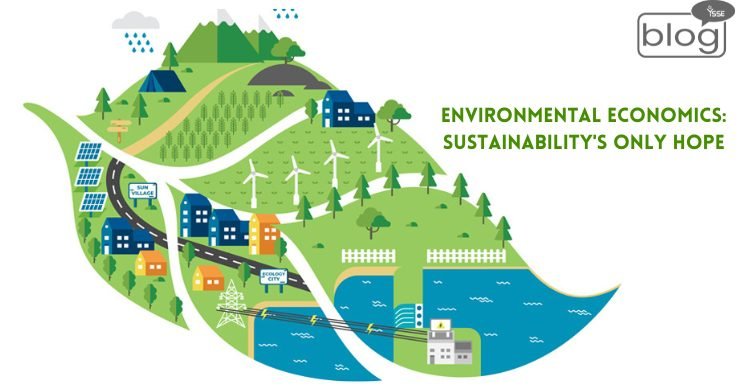The drastic effect of climate change has brought up the demise of our modern world.
As days go by, pollution seems to uplift its game and bring more collateral damage. The more industrialized our world becomes, the more people are getting detached from nature.
Consequently, natural disasters, inflation rate and the standard of lower life quality becomes predominant in our lives.
And to the solution to all of these problems, Environmental Economics comes up to the rescue.
Environmental Economics is a type of study in the field of economics where different externalities are considered in different economic cases and scenarios.
This study provides a framework of how ideologies need to be rethought in order to thrive our world sustainably and turn our lives greener and proficient.
Traditional models like the neo-classical or classical economic models are considered with slight changes which are termed as ‘externalities’.
To explain this concept, we can comprehend the amount of pollution we do by doing simple tasks like using our gasoline-runned vehicles to heavier tasks like running a factory.
These environmental degradation are considered in this concept, which in terms shifts the effect of the supply-demand graph.
As a result, an extra amount of expenditure is to be considered here. This can favor environmentalists to ensure that people don’t waste their environment.
Governmental activities can also be helpful in such cases.
For example, extra tax on gasoline can be implemented to discourage people from using non-renewable resources; whereas extra gifts and price reduction on electric vehicles can be promoted.
Different resources can be preserved with security to ensure the safety of our renewable resources.
Technology is getting innovated and scientists are working on something to use renewable technology efficiently and sustainably.
But an effect named ‘Rebound effect’ makes this issue even more complex, as this theory describes the behavior of how humans will react to the prompt of efficient sources.
‘Cap and Trade’ is another wonderful tactic to encourage sustainability. We know that factories are the largest sources of carbon-di-oxide emission, the gas which is the most responsible for climate change.
The scalability of factories indicates how much this gas is getting emitted, so the theory leans towards the government to set a particular cap for carbon emission.
Following that, data analysis is done on multiple factories and if the cap boundary is crossed, an additional fee is to be paid to a smaller factory to increase efficiency.
Thus the dynamics of energy production and a certain limit to environmental pollution are maintained with this single concept.
Many countries around the globe are trying to intercept the idea of Green Technology, China, USA, UAE are notably working to develop something special to ensure a sustainable future and innovate the idea of greener societies.
The rate of pollution is increasing rapidly, which is very destructive if consequences are measured.
The more pollution occurs, the more disasters and damages are done by nature. So people should be more aware of climate change and work on building a safer and greener community where the Earth can be saved once again from creating its own demise.
To read & learn more blogs, click here.
Writer
Abrar Bin Naser
Intern, Content Writing Department,
YSSE.

